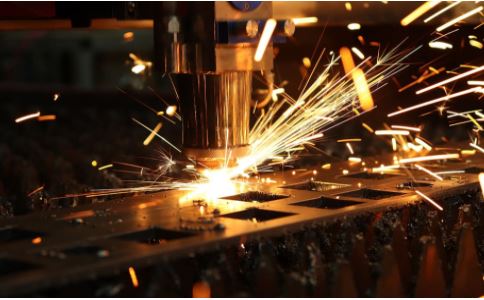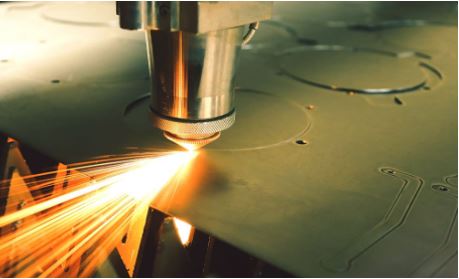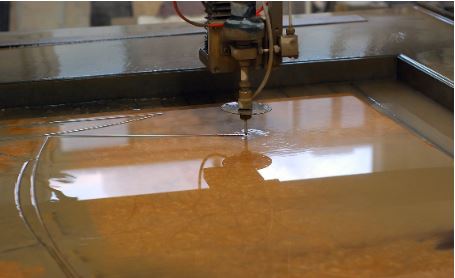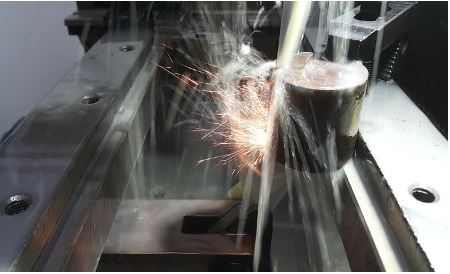
Stepping into the colossal world of steel manufacturing, one swiftly recognizes the pivotal role of cutting machines. These aren’t just tools, they’re the unsung heroes, tirelessly carving intricate paths through thick layers of metal. They help transform enormous steel blocks into usable pieces, shaping the backbone of industries worldwide.
Defining Steel Industry Cutting Machines
In essence, a steel cutting machine is a mechanical device used to cut steel materials. These machines, equipped with advanced technology, slice through steel with precision and speed, creating a variety of products used in multiple industries. Their role is so significant that imagining a steel industry without cutting machines would be akin to envisioning a painter without a brush.
Types of Cutting Machines in the Steel Industry
Within the diverse steel industry, cutting machines come in several different types, each with its own unique functionality and applications.

Laser cutting machines utilize a high-power laser to melt and vaporize steel materials. The precision that laser cutting technology provides provide is nothing short of miraculous. Not only can they etch tiny, intricate designs, but they can also slice through inches-thick steel with no more difficulty than a hot knife through butter.
High precision and accuracy
Non-contact process, minimizing wear and tear
Can handle complex contours and shapes
Plasma Cutting Machines
Whereas laser machines prefer to finesse, plasma cutting machines prefer power. These workhorses utilize ionized gas at high temperatures to melt and cut steel. They are less about intricate design and more about heavy-duty slicing.
Fast cutting speed
Can cut thick materials
Suitable for large-scale steel fabrication

When it comes to preserving the material integrity of steel, few machines can compete with waterjet cutters. These machines use a high-pressure jet of water, often mixed with an abrasive substance, to cut steel. Waterjet cutting is known for its cold cutting process, which prevents material deformation due to heat.
Cold cutting process eliminates heat distortion
Environmentally friendly
Can cut nearly any material thickness
Choosing the Right Cutting Machine for Your Needs
With a multitude of cutting machines available in the steel industry, the decision-making process can be overwhelming. The choice should be guided by factors such as the thickness of the steel to be cut, the required precision, production volume, and your budget.
Impact of Cutting Machines on the Steel Industry
Cutting machines have revolutionized the steel industry. They have automated processes that were once labor-intensive, increased production speed, improved accuracy, and enhanced safety.
Increased Efficiency
Cutting machines have expedited the process of shaping steel, resulting in a drastic increase in production rates. This has allowed businesses to meet the growing demands of their customers more efficiently.
Improved Safety
Before the advent of these machines, steel cutting was a dangerous task. With their introduction, much of the risk has been eliminated, creating a safer work environment.
Innovations and Future Trends in Steel Cutting Machines
As we hurtle forward into the future, the innovations in steel cutting machines continue to astound. They are rapidly evolving, driven by the latest technological advancements and the growing demands of the industry.
Automation and Robotics
Automation and robotics are changing the face of the steel industry, leading to higher precision, efficiency, and productivity. Robotic arms equipped with cutting tools are increasingly being used, capable of performing complex tasks for precision machining with minimal human intervention.
Advancements in Laser Technology
The future of laser cutting machines looks promising with the development of newer, more powerful lasers. These lasers can cut through thicker materials with even higher precision, which is a game changer for industries requiring intricate designs on heavy-duty steel components.
Energy-Efficient Cutting Machines
As industries worldwide become more conscious about their environmental impact, the demand for energy-efficient cutting machines is on the rise. These machines aim to reduce energy consumption without compromising on performance, striking a balance between productivity and sustainability.
Final Considerations when Purchasing a Steel Cutting Machine

In conclusion, the purchase of a steel cutting machine is a significant decision that requires careful consideration. Buyers should evaluate their requirements in terms of production volume, material thickness, precision, and budget.
Consider the machine’s cutting capacity: its ability to cut different thicknesses and types of steel.
Evaluate the machine’s speed and accuracy: how quickly and precisely it can perform the cutting operation.
Don’t overlook the machine’s power requirements and energy efficiency: what impact it will have on your energy bills and environmental footprint.
Check the machine’s durability and maintenance needs: how long it’s expected to last and how much maintenance it requires.
Finally, take into account the vendor’s reputation and after-sales service: the kind of support you can expect after the purchase.
Conclusion
The steel industry depends heavily on its cutting machines, devices that have gone from rudimentary tools to sophisticated pieces of technology. With various types of machines—like the precise laser cutters, powerful plasma cutters, and cold-cutting waterjet machines—there’s a tool for every need. However, as we look to the future, we can expect further advancements in cutting technology, particularly in automation, laser technology, and energy efficiency.
Choosing the right machine can make a significant difference in productivity, cost-effectiveness, and product quality. Therefore, it is crucial to consider all aspects before making a decision. A wise investment in the right cutting machine can lead to increased profitability, enhanced efficiency, and long-term success in the demanding steel industry.
